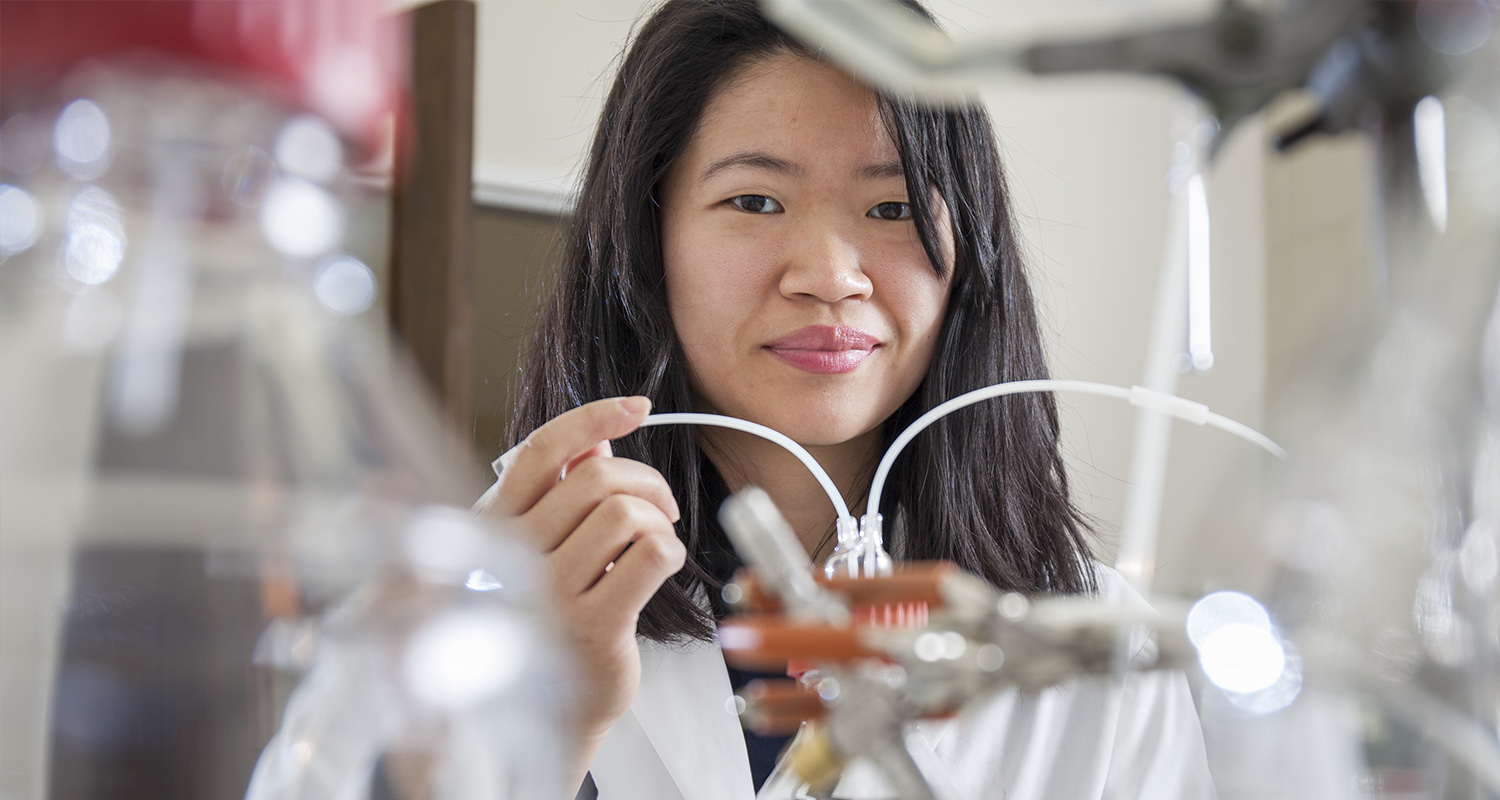
Comparing apples with apples
Crisp, juicy, sweet – the eating quality of apples is usually a matter of personal preference, but for Valentina Ting it's been the subject of three years' research.
Ting (Food Science) has been working in New Zealand and with Fondazione Edmund Mach, a research institute in northern Italy, developing instrumental techniques to test the eating quality of different apples.
“We have been using proton-transfer-reaction mass spectrometry (PTRMS) to test for flavour compounds, and x-ray micro CT scans to explore texture.
"We've even been testing the acoustic properties of the crunch!”
She explains that using PTRMS is simpler – and less expensive – than training a sensory panel. “When we bite and chew an apple the volatiles that make up flavour are released. During swallowing, these volatiles go up the back of the mouth into the nasal cavity enabling us to 'taste' the flavour.
“With PTRMS, we simply put a tube in the panelist's nose and the volatiles are sampled directly from there.”
Ting's research is part of a larger project to create a phenotypic database that will contribute to the creation of new cultivars that are disease resistant, and have improved flavour and texture.
“In New Zealand we grouped apples into three categories, which will also help producers market their apples, as each of the categories is best suited to a different purpose.”
Soft cultivars with intermediate volatiles (Golden Delicious) are good for pies. Firm cultivars with high volatiles (Jazz, Braeburn) make the best juices. Firm cultivars with low volatiles (Fuji, Granny Smith) are suited to long-term storage.
